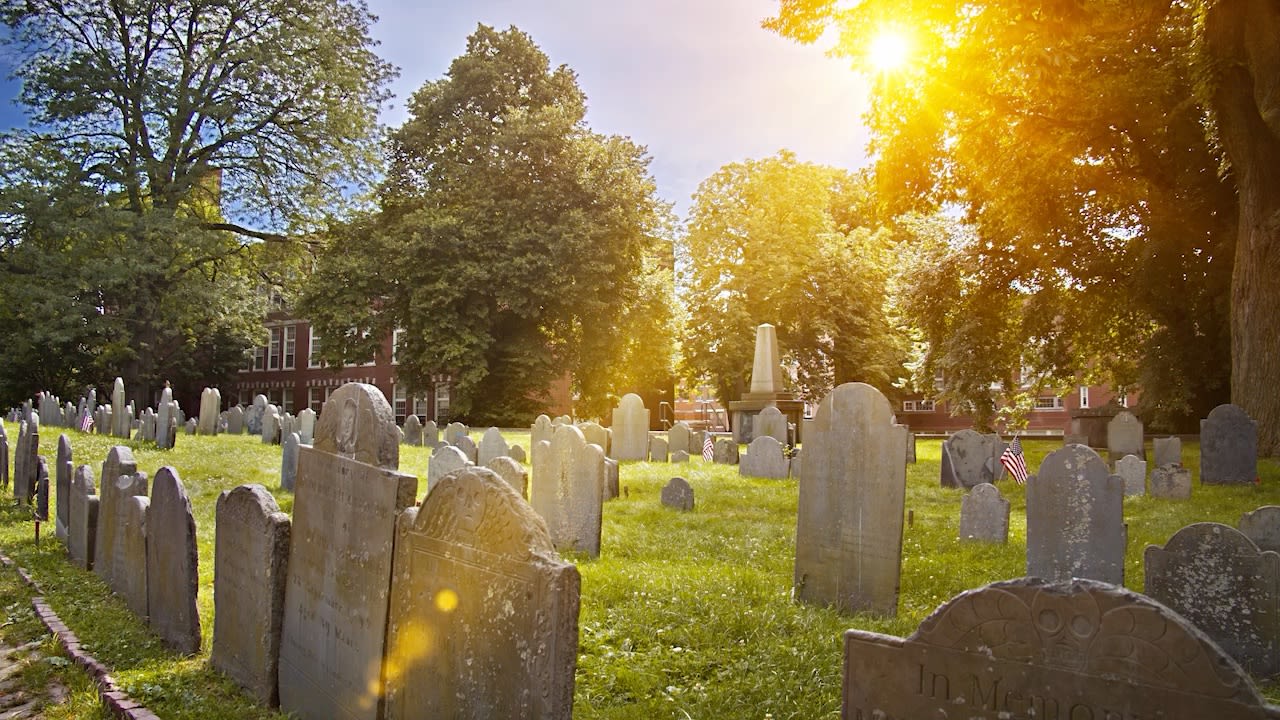Unearthing—and Shaping—Camden History

As Dolly Marshall stands in Lawnside, N.J.’s Mount Peace Cemetery and watches the cars on White Horse Pike, she considers that thousands of people pass by a piece of history each day, yet few of them realize it.
Marshall grew up appreciating cemeteries thanks to the influence of her family, who instilled in her that they were not places to fear, but instead were full of opportunities to learn, honor elders, and preserve memories in danger of getting lost to time. Years later, having discovered her calling as a historical preservationist, she has become a leading voice in the fight to ensure that overlooked figures of Camden’s African American history finally have their stories told.
“I have an affinity for history—I want to know how people got to where they were in life,” Marshall said. “Historical preservation didn’t come to me as a career until later, but my parents taught me to safeguard history and share the stories I’ve learned. I loved learning about city of Camden—my mother’s Camden ancestry goes all the way back to the 1850s. It has always given me a feeling of belonging.”
Marshall is a double major in history and Africana studies in the College of Arts and Sciences. She’s also one of five trustees of Mount Peace Cemetery, which was created by prominent Black citizens of Camden in 1900. One of the trustees’ main responsibilities is to restore and maintain the cemetery, which involves remapping the space, repairing damaged headstones, and locating burial plots.

Mount Peace Cemetery in Lawnside, N.J.
Mount Peace Cemetery in Lawnside, N.J.
“Identifying who is buried in unmarked graves is a process, just like anything else,” Marshall said, noting that her research incorporates a mix of burial records, local archives, state archives, and cemetery maps. “If there is no community of descendants nearby, the process mostly relies on records. But once you start making people aware, you will see them reaching out. I round out my research by tracing and talking to these individuals. The descendant community is big, but due to the erasure of African American history, it’s not as easy to readily find them.”
She has found that many people connect to the cause, especially those interested in history or genealogy. “It appeals to a diverse group of people interested in knowing more about themselves and their ancestors: high school students, veterans, retirees, and like-minded historians and preservation groups,” she said. “It becomes more than a cemetery and connects people in so many different capacities.”

Among those who Marshall has been able to connect to the cause are Rutgers-Camden faculty and students themselves. When she enrolled at the university in 2020, she found that faculty members took an interest in her preservation work, and, in some cases, showed up in person to lend their support. Among those was Assistant Professor of History Kendra Boyd, who came to Mount Peace Cemetery to help with cleanup efforts.
“It’s wonderful to have people come out and see me in my element,” Marshall said, noting that her participation in the inaugural Chancellor’s Mayoral Internship Program helped her to build her network in local government. One of her colleagues, City of Camden Community Outreach Coordinator Dorri Brown, bonded with Marshall over their shared interest in genealogy, and the two shared a remarkable experience as a result.

Chancellor Antonio D. Tillis, Mayor Victor G. Carstarphen, and Dolly Marshall (center), along with other interns at the Chancellor's Mayoral internship program kickoff event in 2022.
Chancellor Antonio D. Tillis, Mayor Victor G. Carstarphen, and Dolly Marshall (center), along with other interns at the Chancellor's Mayoral internship program kickoff event in 2022.
“Mrs. Brown told me she was her family’s genealogist, and we connected,” Marshall said, “She'd always known that her great grandfather, a World War I veteran, was buried in Mount Peace Cemetery. She had been looking for his burial location for many years. Most of the cemetery’s burial records were destroyed in the 1960s by a fire, which makes locating every individual plot all the more challenging. When his headstone showed up on FindAGrave.com late last year, she was elated, but we still didn’t know the location.”
During a project guided by Marshall and a dedicated volunteer in 2021, more than 200 graves were relocated from the oldest portion of the cemetery. “After talking with Mrs. Brown, I realized he was one of them. I got to personally take her to the spot where he was buried and brought him back into the present consciousness. Through Dorri, his great granddaughter, he is remembered.”

When asked what advice she would give to an aspiring preservationist, Marshall seemed to reach even deeper into her reserve of energy and enthusiasm.
“You have to have a passion—it’s not a job; it’s a lifestyle,” Marshall said. “You have to be prepared for the fact that it’s going to be different every day.” For someone who thrives on change and variety, though, it’s perfect, she said.
The work of preservationists has been spotlighted on a national stage—most recently through the African American Burial Grounds Preservation Act. But, in Marshall’s view, top-down support can only help so much. The real power of the movement, she says, comes from the people working inside the iron gates of cemeteries at, quite literally, the grassroots level.
“Physically show up to volunteer, come to a service event, and get in the element,” Marshall advised. She pointed out that there are multiple areas for involvement: preservation, conservation, sustainability, and anthropology. “It must start with something you enjoy doing,” she added. “Find a way that you can support the cause, and do it. Because everyone's story deserves to be told."

Creative Design: Karaamat Abdullah